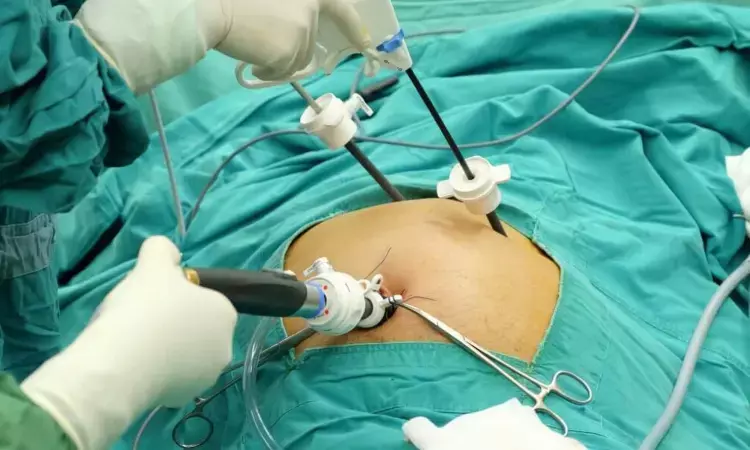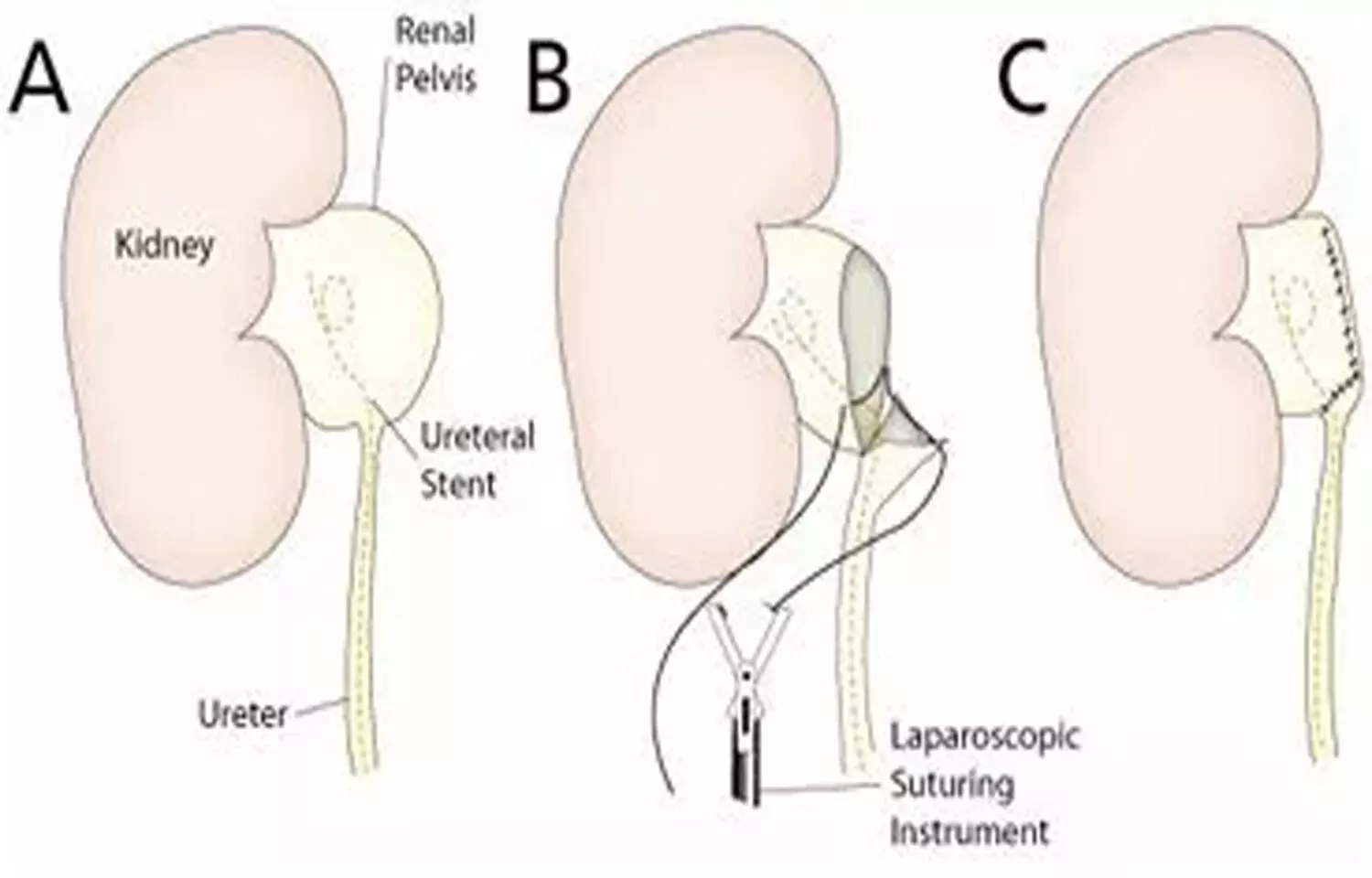- Home
- Medical news & Guidelines
- Anesthesiology
- Cardiology and CTVS
- Critical Care
- Dentistry
- Dermatology
- Diabetes and Endocrinology
- ENT
- Gastroenterology
- Medicine
- Nephrology
- Neurology
- Obstretics-Gynaecology
- Oncology
- Ophthalmology
- Orthopaedics
- Pediatrics-Neonatology
- Psychiatry
- Pulmonology
- Radiology
- Surgery
- Urology
- Laboratory Medicine
- Diet
- Nursing
- Paramedical
- Physiotherapy
- Health news
- Fact Check
- Bone Health Fact Check
- Brain Health Fact Check
- Cancer Related Fact Check
- Child Care Fact Check
- Dental and oral health fact check
- Diabetes and metabolic health fact check
- Diet and Nutrition Fact Check
- Eye and ENT Care Fact Check
- Fitness fact check
- Gut health fact check
- Heart health fact check
- Kidney health fact check
- Medical education fact check
- Men's health fact check
- Respiratory fact check
- Skin and hair care fact check
- Vaccine and Immunization fact check
- Women's health fact check
- AYUSH
- State News
- Andaman and Nicobar Islands
- Andhra Pradesh
- Arunachal Pradesh
- Assam
- Bihar
- Chandigarh
- Chattisgarh
- Dadra and Nagar Haveli
- Daman and Diu
- Delhi
- Goa
- Gujarat
- Haryana
- Himachal Pradesh
- Jammu & Kashmir
- Jharkhand
- Karnataka
- Kerala
- Ladakh
- Lakshadweep
- Madhya Pradesh
- Maharashtra
- Manipur
- Meghalaya
- Mizoram
- Nagaland
- Odisha
- Puducherry
- Punjab
- Rajasthan
- Sikkim
- Tamil Nadu
- Telangana
- Tripura
- Uttar Pradesh
- Uttrakhand
- West Bengal
- Medical Education
- Industry
Longer distal ureteral resections may significantly lower risk of stricture formation in cystectomy patients

In a groundbreaking study spanning the years 2015 to 2022, researchers have identified a crucial factor influencing the risk of benign uretero-enteric anastomotic stricture (UEAS) formation following cystectomy and urinary diversion. The study found that vascular compromise is a critical factor causing benign uretero-enteric anastomotic stricture. The length of distal ureteral resection also plays a role in the development of these strictures.
The study results were published in the journal Urology.
Benign uretero-enteric anastomotic strictures (UEAS) emerge as a frequent and consequential long-term complication after cystectomy with urinary diversion. Despite the variability in the literature, UEAS can be morbid. Hence, it is necessary to identify the impact of the length of distal ureteral resection on the risk of benign uretero-enteric anastomotic stricture (UEAS) formation following cystectomy and urinary diversion. Hence researchers analyzed a comprehensive database of 366 patients who underwent these procedures, shedding light on the impact of the length of distal ureteral resection on UEAS risk.
An analysis was conducted on a patient database encompassing individuals who underwent cystectomy and urinary diversion between 2015 and 2022. Final pathology assessments included the examination of distal ureteral resections, with the length of the resected ureter gathered from pathology reports. Confirmation of benign uretero-enteric anastomotic strictures (UEAS) involved renal scintigraphy, antegrade nephrostogram, or endoscopic evaluation. The association between stricture formation and various clinical parameters was evaluated using T-tests, Chi-square tests, and multivariable analysis.
Findings:
- The research uncovered that 35 out of the 366 patients (9.5%) developed UEAS following cystectomy and urinary diversion.
- To understand the relationship between distal ureteral resection length and stricture formation, the team examined the pathology reports of 711 uretero-enteric anastomoses.
- Intriguingly, they found that the median distal ureteral resection was significantly longer among cases where a UEAS did not form compared to those where it did (2.3 cm vs. 1.65 cm, p=0.028).
- The study further delved into the temporal aspect of stricture formation, revealing that the median time to UEAS development was 12.5 months.
- Of the 711 uretero-enteric anastomoses, 40 (5.6%) ultimately formed a UEAS.
- Multivariable logistic regression, adjusting for factors such as surgical approach, prior radiation, ureteral side, and urinary diversion type, demonstrated that longer distal ureteral resections were inversely associated with the odds of UEAS formation (OR 0.73, 95% CI 0.58-0.92).
- Intriguingly, the study went beyond mere statistical associations. Multivariable Cox regression analysis showed that the length of distal ureteral resection was inversely associated with the time to stricture formation (HR 0.78, 95% CI 0.62-0.98). This implies that patients with longer distal ureteral resections experienced a delayed onset of UEAS.
This groundbreaking research has potential implications for surgical approaches following cystectomy. The revelation that longer distal ureteral resections, and consequently shorter ureters, are associated with a significantly lower risk of UEAS formation could influence how surgeons approach these procedures, aiming to minimize the risk of postoperative complications.
As the medical community absorbs the implications of this study, it marks a significant step forward in our understanding of UEAS risk factors and opens new avenues for refining surgical techniques to enhance patient outcomes.
Further reading: Das A, Zeng E, Risk M, et al. Shorter ureters lead to fewer strictures following cystectomy and urinary diversion. Urology. Published online December 18, 2023. doi:10.1016/j.urology.2023.12.005
BDS, MDS
Dr.Niharika Harsha B (BDS,MDS) completed her BDS from Govt Dental College, Hyderabad and MDS from Dr.NTR University of health sciences(Now Kaloji Rao University). She has 4 years of private dental practice and worked for 2 years as Consultant Oral Radiologist at a Dental Imaging Centre in Hyderabad. She worked as Research Assistant and scientific writer in the development of Oral Anti cancer screening device with her seniors. She has a deep intriguing wish in writing highly engaging, captivating and informative medical content for a wider audience. She can be contacted at editorial@medicaldialogues.in.
Dr Kamal Kant Kohli-MBBS, DTCD- a chest specialist with more than 30 years of practice and a flair for writing clinical articles, Dr Kamal Kant Kohli joined Medical Dialogues as a Chief Editor of Medical News. Besides writing articles, as an editor, he proofreads and verifies all the medical content published on Medical Dialogues including those coming from journals, studies,medical conferences,guidelines etc. Email: drkohli@medicaldialogues.in. Contact no. 011-43720751




